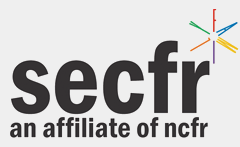An Interdisciplinary Study to Understand Treatment Seeking Behavior Among Female Survivors of Eating Disorders: Anorexia nervosa, Bulimia nervosa, and Binge Eating Disorder
Proposal Focus
Research
Presentation Type
Poster
Abstract
As modern medicine advances knowledge of the human body, mental health is still underrepresented and in some cases ignored as a 'real' medical issue (Latzer, 2011). Under that umbrella falls eating disorders, particularly these three types: anorexia nervosa, bulimia nervosa, and binge eating disorder. This study was done in order to better understand what influenced female survivors of eating disorders to seek treatment. In America, approximately 0.9 percent of women will develop anorexia eating disorder (Stice E & Bohon C. 2012) , 3.5 percent of women will develop a binge eating disorder, and 1.5 percent will develop a bulimic eating disorder (Hudson et al, 2007). While these percentages may seem small, the health problem is not, eating disorders have the highest mortality rate of any mental illness (Smink et al, 2012). The purpose of this study is to understand what psychosocial factors influence people with eating disorders to seek treatment.
Keywords
Family, Eating, Development
Location
Yorkshire
Start Date
4-4-2020 10:15 AM
End Date
4-4-2020 11:15 AM
An Interdisciplinary Study to Understand Treatment Seeking Behavior Among Female Survivors of Eating Disorders: Anorexia nervosa, Bulimia nervosa, and Binge Eating Disorder
Yorkshire
As modern medicine advances knowledge of the human body, mental health is still underrepresented and in some cases ignored as a 'real' medical issue (Latzer, 2011). Under that umbrella falls eating disorders, particularly these three types: anorexia nervosa, bulimia nervosa, and binge eating disorder. This study was done in order to better understand what influenced female survivors of eating disorders to seek treatment. In America, approximately 0.9 percent of women will develop anorexia eating disorder (Stice E & Bohon C. 2012) , 3.5 percent of women will develop a binge eating disorder, and 1.5 percent will develop a bulimic eating disorder (Hudson et al, 2007). While these percentages may seem small, the health problem is not, eating disorders have the highest mortality rate of any mental illness (Smink et al, 2012). The purpose of this study is to understand what psychosocial factors influence people with eating disorders to seek treatment.
![Southeastern Council on Family Relations Conference [2018-2020]](/assets/md5images/a0d3661d5139dc9b769a57be6f085156.png)

